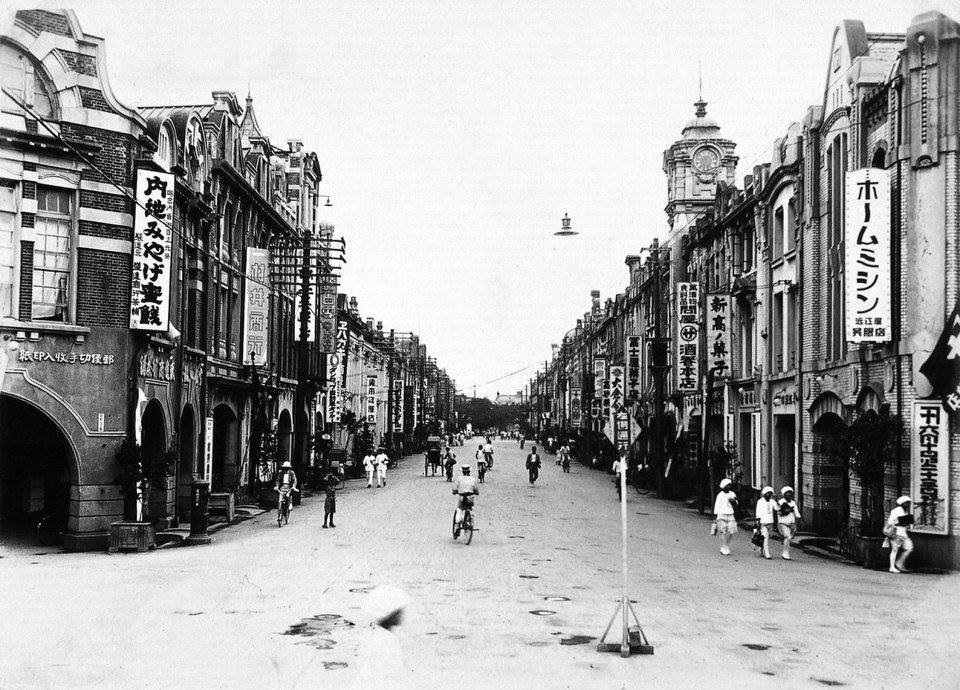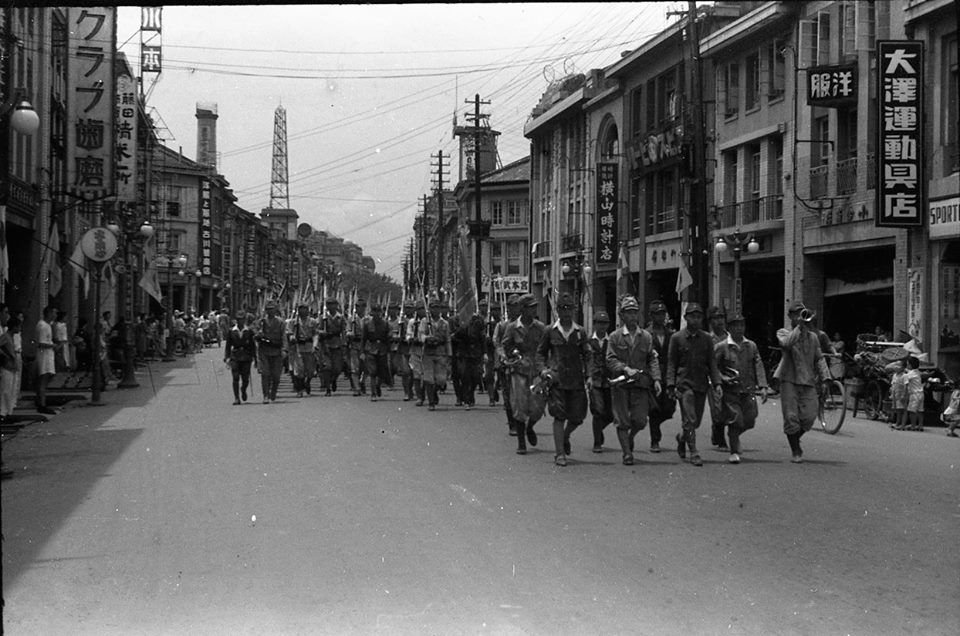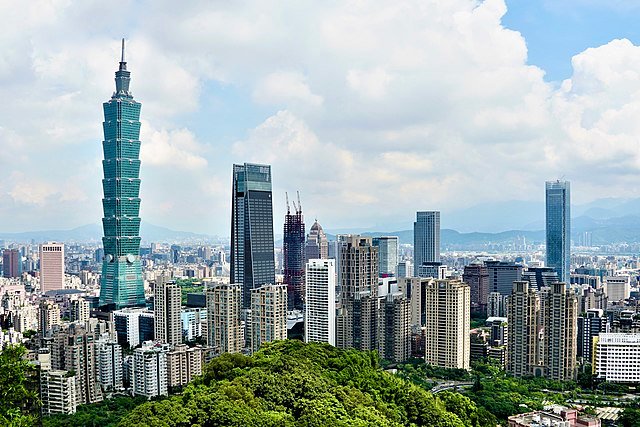Taipei Then and Now
Taipei Then
Taipei, the capital and political center of Taiwan (officially the Republic of China), holds a unique cultural and historical background shaped by various influences.
Its name, meaning “North of Taiwan,” comes from the Chinese characters for “Tai” and “pei”, and is commonly romanized as “Taipei” or “Táiběi” in Hanyu Pinyin.
Originally spelled “Tʻai-pei” in Wade–Gile’s romanization, the city is also sometimes called “Tai-pak,” based on the Taiwanese Hokkien language.
During Japanese rule from 1895 to 1945, the city was known as “Taihoku,” reflecting the Japanese pronunciation of its Chinese characters.
Today, Taipei is a vibrant, modern metropolis that serves as the cultural, economic, and governmental hub of Taiwan.

Taipei History
Taipei’s history is shaped by a blend of indigenous, Chinese, and Japanese influences.
Initially, the Taipei Basin was home to the Ketagalan indigenous tribes until the early 18th century, when Han Chinese settlers from Fujian province began migrating to the area.
These settlers gradually transformed Taipei into a bustling trade hub, leveraging its ports, including Chi-lung (Keelung) and Tan-shui (Danshui), for overseas commerce, especially in tea export.
Related Article: Ho Chi Minh City Then and Now
By 1875, Taipei was made an administrative entity under the Qing Dynasty, and when Taiwan became a province in 1886, the city was designated its provincial capital.
In 1895, Taiwan was ceded to Japan after China’s defeat in the First Sino-Japanese War, and the Japanese retained Taipei as the capital.
Under Japanese rule, the city underwent significant urban planning, infrastructure development, and modernization.
Related Article: Manila Then and Now
This period introduced public buildings, administrative offices, and a new architectural style that still characterizes some parts of Taipei today, including notable structures like the Presidential Office Building.
Following Japan’s defeat in World War II in 1945, Taiwan was placed under the control of the Republic of China (ROC), and Taipei became a focal point of conflict during the 1947 February 28 Incident—a violent crackdown on local Taiwanese by the ROC government.
In 1949, after the ROC government, led by the Kuomintang (KMT), lost mainland China to the Communists, they retreated to Taiwan, declaring Taipei the provisional capital.
Related Article: Jakarta Then and Now

Taipei experienced rapid growth after 1949, expanding its borders and population, especially after being designated a special municipality in 1967.
The city absorbed nearby towns and districts, quadrupling in area and accommodating a growing urban population that reached over two million by the 1970s.
Despite the stabilization of its population in the 1990s, Taipei remained one of the world’s most densely populated cities.
Related Article: Guangzhou Then and Now
In 1990, Taipei’s role in Taiwanese political history continued as it became the site of the Wild Lily student rallies, which advocated for democratic reforms and led to Taiwan’s transition to a multi-party democratic system by 1996.
Today, Taipei stands as a symbol of Taiwan’s complex history and its vibrant, democratic society.
Related Article: Shenzhen Then and Now
Taipei Now

Taipei, the capital and a special municipality of Taiwan, is an important political, economic, and cultural center.
Located in northern Taiwan, Taipei City sits about 25 km southwest of the port city of Keelung on the Pacific Ocean.
The municipality itself is an enclave within New Taipei City, an administratively separate entity created in 2010 from the former Taipei County.
Related Article: Beijing Then and Now
Geographically, Taipei is situated in the Taipei Basin, a natural valley formed by the Tamsui River and two of its main tributaries, the Keelung and Xindian rivers, which create a bowl-shaped landscape that provides a unique natural setting for the city.
The terrain in Taipei varies from low-lying areas in the city center to mountainous regions on its outskirts.
To the north, Mount Qixing rises to 1,120 meters (3,675 feet), contributing to the diverse topography of the city.
Related Article: Mumbai Then and Now
Taipei experiences a humid subtropical climate with hot, rainy summers and cooler, damp winters, a climate that influences the daily life and lifestyle of its residents.
Despite being overtaken by other municipalities in Taiwan in terms of population size, Taipei remains vital to the island’s identity and development.
With an area of about 272 square kilometers (105 square miles) and a population of approximately 2.7 million in 2015, Taipei is the core of the Taipei–Keelung metropolitan area, often called “Greater Taipei.”
Related Article: Kuala Lumpur Then and Now
This metropolitan region, which includes New Taipei and Keelung, has a combined population of over 7 million, making it one of the world’s most densely populated urban areas.
As a major urban center, Taipei serves as a focal point of Taiwan’s political affairs, international relations, and cultural heritage, attracting people from across Taiwan and beyond.
Related Article: Bangkok Then and Now
FAQs
Taipei is the capital of Taiwan, which functions as a separate political entity from China. However, China claims Taiwan as part of its territory, while Taiwan views itself as a sovereign state.
In 1949, after the Chinese Civil War, the Nationalist government retreated to Taiwan, establishing Taipei as its capital. Since then, Taiwan and mainland China have been governed separately.
Due to political sensitivities, Taiwan competes in the Olympics under the name “Chinese Taipei” to allow participation without directly challenging China’s stance on Taiwan’s sovereignty.
The name “Chinese Taipei” was agreed upon as a compromise with the International Olympic Committee to avoid political conflict with China, allowing Taiwanese athletes to compete internationally.






























